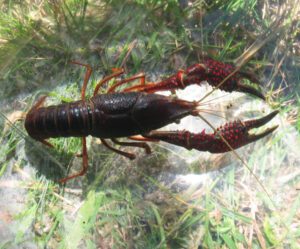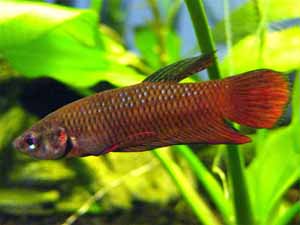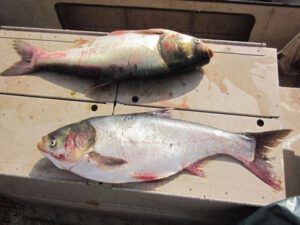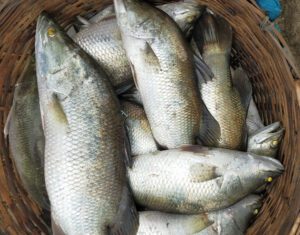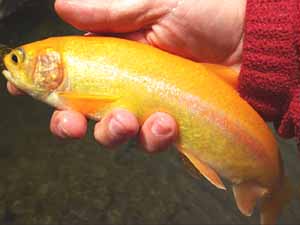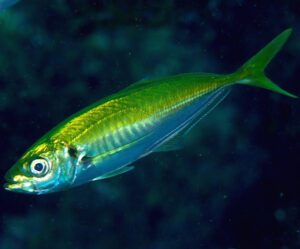Almost all types fish suffer from diseases or other health problems (just like humans or other animals). Fish are also prone to suffer from some diseases. They also get affected by different types of health problems or fish diseases. Diseases are the main obstacle for successful fish farming business in most areas.
Fish in stagnant water body (such as pond) suffer much more than natural open water resources. So, in most cases fish suffer from different types of diseases when you grow them artificially in pond. By using modern farming methods in fish farming we can reduce diseases in fish.
When a fish is sick, it can show some signs such as swimming in strange ways, not eating, or having changes in its appearance. To be successful in fish farming business, knowing about common fish diseases and how to care for them can help to keep your fish healthy, happy and free from diseases or health problems. Before discussing further, let us first explain what fish diseases actually is.
What Are Fish Diseases?
Fish diseases are actually some health problems that can affect the health of your fish. Most of these diseases can be caused by different things such as bacteria, viruses, fungi, parasites, or even bad water quality. These fish diseases can happen in both aquariums and ponds. And it is very important for us to know the signs of sickness so that we can take care of our fish as soon as possible.

What Are Some Common Fish Diseases?
Here we are trying to list some of the most common fish diseases, their cause, symptoms, and treatment.
White Spot (Ich)
White spot disease is caused by a tiny parasite called Ichthyophthirius. This parasite attaches to a fish’s skin and fins, causing white spots to appear. Common symptom is white spot on the fish’s body and fins (like salt grains). The affected fish may also scratch its body against objects, swim less, or breathe heavily. You can treat this disease by raising the water temperature slowly and using special medications called anti-ich treatments.
Swim Bladder Disease
The swim bladder disease affects the fish’s swim bladder. It can happen for many reasons, including constipation, eating too much, or also a bacterial infection. The affected fish may float upside down of have trouble swimming properly. The fish might swim sideways or stay near the surface or bottom of the tank. Try feeding the fish balanced peas (soft, cooked peas) if it is constipated. If it become a more serious issue, use special medications. Don’t overfeed your fish, and make sure that your fish’s diet is balanced.
Fin Rot
Fin rot is another fish disease which is also caused by bacteria that attack the fins and tail of the fish. It is often the result of stress and poor water quality. Symptoms of this disease are, frayed fins, discolored, or have black edges. And the fish may also look weak or tired. Improve the water quality by changing the water and by using medications to fight the bacteria.
Dropsy
Dropsy disease is typically caused by internal problems like a bacterial infection or problems with the fish’s kidneys. Poor water quality can also cause this disease. The affected fish’s body may look swollen, and its scales may stick out, making it look like a pine cone. Sometimes, the fish may have difficulty breathing and may swim abnormally. Dropsy can be very difficult to treat in most cases. You can change the water if possible, keep the pond environment clean, and use different medications which are prepared to treat internal infections. The fish may need to be euthanized if the dropsy is severe.
Velvet Disease
A parasite called Oodinium cause the velvet disease. This parasite creates a golden or yellow dust-like covering on the fish’s skin. The affected fish may have a yellowish coating on their skin and fins (similar to velvet fabric). And the affected fish sometimes may scratch itself or swim erratically. Raising the water temperature and using copper-based treatments (available in pet stores) can help to treat this disease. If possible quarantine the infected fish to prevent the disease from spreading.
Anchor Worm Disease
The anchor worm disease is caused by a type of parasite called anchor worms. These worms attach to the fish’s body, and cause damage to the skin. Common symptoms are visible red or white spots on its body where the worms are attached. You can treat anchor worms with medications which are designed to kill external parasites. And in some cases, you may need to remove the worms manually using some special tools.
How To Prevent Fish Diseases?
We all know that ‘prevention is better than cure’. So, preventing different fish diseases is always better than treating them. You can prevent most of the fish diseases by keeping the water clean, providing them adequate nutritious food, quarantining new fish, avoiding stress, and performing regular health check-ups. Performing these steps will help the prevent most of the fish diseases.
What To Do If Your Fish Gets Sick?
First of all, identify the disease by looking for signs such as changes in the fish’s appearance, behavior, or eating habits. Quarantine the sick fish if possible. In case of treating the fish with any medicine, follow the instructions carefully, because some treatments need to be used for several days or weeks. Regularly check the quality of water, and clean the water. And consult a vet as soon as possible who specializes in fish, especially if your fish is very sick or if you are unsure how to treat the fish.
If you are a new fish farmer, then you must have to run your business according to an expert’s suggestion to prevent fish diseases or other health problems of your fish.. Hope this guide has helped you! Good luck!

